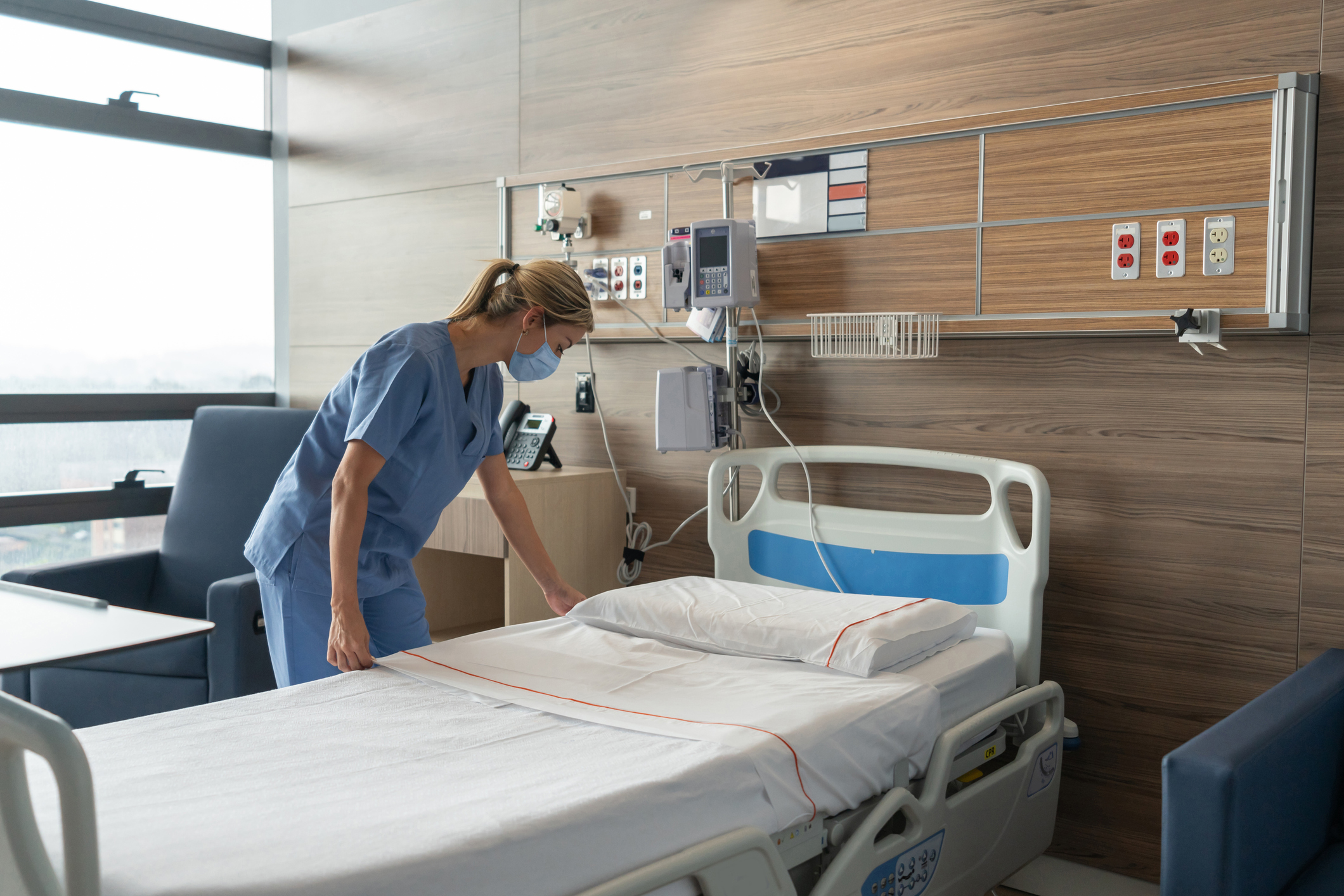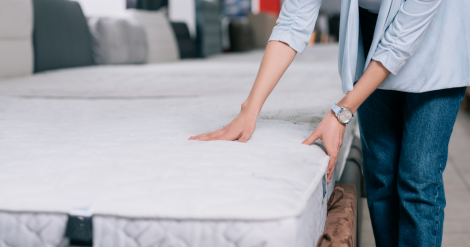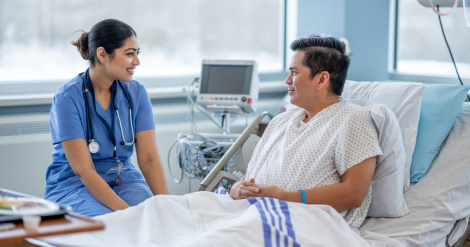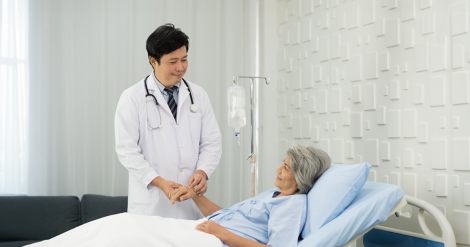No products in the cart.

Therapeutic Support Surfaces in the Critical Care Unit
Critically-ill patients are often physiologically and hemodynamically unstable, requiring complex treatment supporting perfusion and circulation. Pressure injuries are common complications for these patients, especially for those who are hypotensive, sedated, and mechanically ventilated. This article will describe how a multifaceted strategy that includes nutritional support, frequent repositioning, and therapeutic support surfaces can protect these high-risk patients from skin breakdown. Therapeutic Support Surfaces in the Critical Care Unit are essential.
Risk Factors Specific to Critical Care Units
A complex interplay of factors increases the risk of pressure injury development in critically ill patients. The use of vasopressors to maintain systolic blood pressure is strongly associated with skin breakdown because these medications cause peripheral vasoconstriction and divert blood flow away from the skin. Specifically, a prolonged mean arterial pressure of <60 while on Vasopressin indicates poor perfusion of skin tissues (1-5). Mechanical ventilation for longer than 72 hours also plays a significant role for a number of reasons. These patients require the head of the bed to remain elevated to help prevent ventilator-associated pneumonia (VAP) but this position can lead to shear injuries as gravity pulls the patient’s torso down towards the foot of the bed. In addition, neuromuscular blockade, wrist restraints and sedation prevent patients from independently repositioning themselves in the bed (3,4).
Acute Skin Failure
The heavy burden of illness experienced by critically ill patients puts them at risk for acute skin failure (ASF) as well as localized pressure injuries. The skin is the largest organ of the body that receives up to one-third of the body’s circulating blood volume, and it can fail due to hypoperfusion. Generalized necrosis of skin tissues can occur simultaneously to critical illness, particularly multisystem organ failure or septic shock with prolonged hypotension. Localized pressure ulcers and ASF can occur simultaneously, as failing skin increases susceptibility to the forces of pressure and shear. A previous history of liver failure, peripheral vascular or arterial disease significantly increases the risk of ASF in critically ill patients (1,5).
Assessment/Braden Scale
The Braden scale can be of limited use in intensive care units because almost all patients are identified as high risk and several risk factors unique to critical illness are not accounted for. These include vasopressor use for hemodynamic instability and mechanical ventilation with neuromuscular blockade and sedation (2,6,7,8). For this reason, critical care units may utilize brightly colored signs to highlight which patients are most vulnerable to skin breakdown. These signs are instantly visible to all care providers and serve as a reminder when additional precautions are required to prevent development of pressure injuries (6).
Skin Care Bundle
Care bundles provide and standardization of evidence-based interventions to promote positive patient outcomes. Skin protection bundles include five core components: Risk Assessment, Skin Assessment, Support Surfaces, Nutrition and Repositioning. Nursing staff should perform a risk and skin assessment for each patient within six hours of admission to the critical care unit. Albumin and prealbumin should be assessed weekly or bi-weekly with additional nutritional support for low or decreasing levels. The head of the bed should be adjusted to 30 degrees or less unless contraindicated and prophylactic dressings can be applied to prevent sacral skin breakdown (3,4,9,10). Pressure-redistributing support surfaces should be used on all critical care beds as they outperform conventional hospital mattresses in preventing ulcer formation. MedMattress Advanced Care mattresses feature two layers of low-density, conforming foam on top for comfort with a layer of high-density foam underneath for balanced support. For additional skin protection, MedMattress Ultra Care mattresses have a top layer of cool-gel memory foam to wick heat away from the patient’s body. For high-risk bariatric patients, the MedMattress Bari Ultra Care mattress has a weight capacity of 1,000 lbs. All Care mattresses have low-shear nylon top covers with secondary fluid barriers to ensure that the foam core remains dry even if the outer cover is compromised.
Key Takeaway
Critically ill patients require comprehensive pressure injury prevention strategies with meticulous skin assessment, frequent repositioning and protection of bony prominences. Pressure-relieving mattresses are particularly important when patients receive mechanically ventilation, sedation and tube feedings. The MedMattress Advanced and Ultra CARE mattresses are an economical alternative to alternating pressure mattresses. The MedMattress team is ready to help critical care units balance cost and functionality while protecting their patients from pressure injuries.
References
- Pittman, J., Beeson, T., Dillon, J., Yang, Z., … Cuddigan, J. (2021). Hospital-acquired pressure injuries and acute skin failure in critical care: A case-control study. Journal of Wound, Ostomy & Continence Nursing, 48(1), 20-30.
- Alderden, J., Rondinelli, J., Pepper, G., Cummins, M. & Whitney, J. (2017). Risk factors for pressure injuries among critical care patients: A systematic review. International Journal of Nursing Studies, 71, 97-114.
- Al-Dorzi, H. (2019). Prevention of pressure injury in the intensive care unit. Saudi Critical Care Journal, 3(1), 24-28.
- Zuo, X. & Meng, F. (2015). A care bundle for pressure ulcer treatment in intensive care units. International Journal of Nursing Sciences, 2(4), 340-347.
- Delmore, B., Cox, J., Rolnitzky, L., Chu, A., & Stolfi, A. (2015). Differentiating a pressure ulcer from acute skin failure in the acute critical care patient. Advances in Skin & Wound Care, 28(11), 514-524.
- Gill, E. (2015). Reducing hospital acquired pressure ulcers in intensive care. BMJ Quality Improvement Reports, 4(1):u205599.w3015.
- Coyer, F. & Tayyib, N. (2017). Risk factors for pressure injury development in critically ill patients in the intensive care unit: A systematic review protocol. Systematic Reviews, 6, 58.
- Ranzani, O., Simpson, E., Japiassu, A., & Noritomi, D. (2016). The challenge of predicting pressure ulcers in critically ill patients: A multicenter cohort study. Annals of the American Thoracic Society, 13(10), 1775-1783.
- Rivera, J., Donohoe, E., Deady-Rooney, M., Douglas, M. & Samaniego, N. (2020). Implementing a pressure injury prevention bundle to decrease hospital-acquired pressure injuries in an adult critical care unit: An evidence-based pilot initiative. Wound Management & Prevention, 66(10), 22–29.
- He, M., Tang, A., Amao, M., Ge, X., & Zheng, J. (2016). Pressure ulcers in the intensive care unit: An analysis of skin barrier risk factors. Advances in Skin & Wound Care, 29(11), 493-498.
- Byrne, J., Nichols, P., Sroczynski, M., Stelmaski, L., … Carlin, K. (2016). Prophylactic sacral dressing for pressure ulcer prevention in high-risk patients. American Journal of Critical Care, 25(3), 228-234.
You might also be interested in:

-
/
Rest for Success: When to Bid Adieu to Your Old Mattress
Rest for Success: When to Bid Adieu to Your Old Mattress We spend about a third of our lives in bed, and the quality of our sleep directly impacts our overall well-being. One often overlooked factor in achieving a good night’s sleep is the condition of our mattress. As the years go by, our faithful […]
Read more
Unveiling the Truth: Busting Common Mattress Myths
Unveiling the Truth: Busting Common Mattress Myths A good night’s sleep is crucial for overall well-being, and the right mattress plays a pivotal role in achieving that. However, amidst the quest for the perfect mattress, numerous misconceptions have caused mattress shoppers confusion when searching for the right mattress. Our latest blog unravels the truth behind […]
Read more
-
/
How Medical Bed Mattresses Aid in Post-Surgery Recovery
How Medical Bed Mattresses Aid in Post-Surgery Recovery Surgery can be a daunting experience, regardless of its nature or severity. The period following a surgical procedure, known as post-surgery recovery, is crucial for achieving the best possible outcome. While factors like rest, nutrition and pain management are widely acknowledged as vital, the role that medical […]
Read more
-
/
Meeting Medical Mattress Quality Standards
Meeting Medical Mattress Quality Standards Medical mattresses are designed to meet specific quality standards to ensure patient safety, comfort and hygiene. These standards are established to address the unique needs of healthcare environments as well as the patients utilizing these mattresses. Some key quality standards for medical mattresses include: Infection Control Standards Water […]
Read more